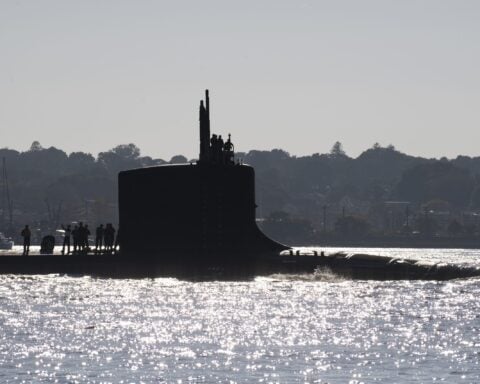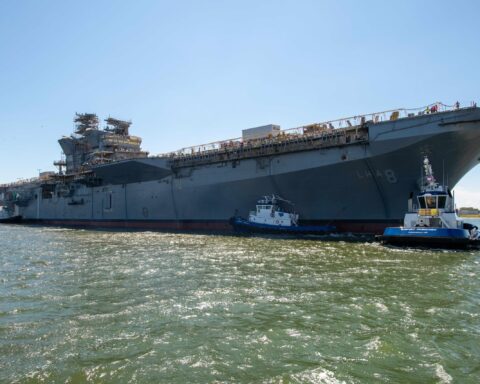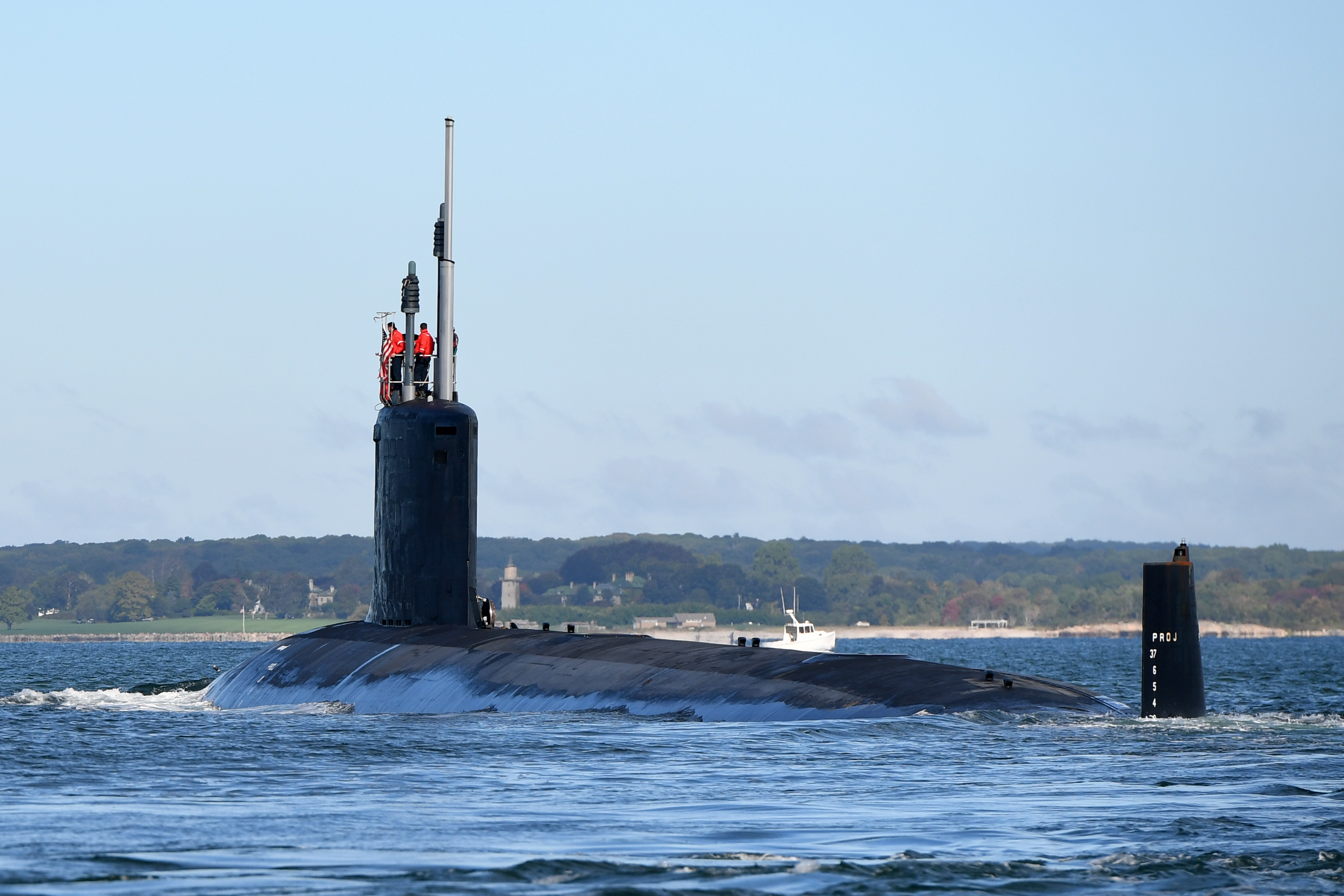
American, Philippine, Australian, and French forces began Balikatan 2024 on Monday in a ceremony at Camp Aguinaldo, Manila.
Translating to “shoulder-to-shoulder” in Tagalog, the Balikatan series of exercises has evolved from a small navy-to-navy drill during the Cold War to the premier annual military exercise held between the U.S. and the Philippines. In recent years, amid China’s increasing assertiveness in the South China Sea and Manila’s rapprochement of relations with Washington, Balikatan has expanded in both size and scope.
“Balikatan is a tangible demonstration of our shared commitment to each other. It matters for regional peace and stability. When we increase our mutual response and defense capabilities, we strengthen our ability to promote regional security and protect our shared interests,” Lt. Gen. William Jurney, U.S. Marine Corps Forces Pacific commander, said during opening remarks at the exercise kickoff.
While smaller than last year’s exercise by almost a thousand troops, the three-week-long 39th iteration of Balikatan will focus on several high-end coastal defense activities, including counter-landing and sinking exercises, on the western coasts of the provinces of Palawan and Luzon near the South China Sea and the Luzon Strait. Around 16,000 troops are slated to participate in the drills, with 11,000 coming from the U.S. Marine Corps, Army, Navy and Air Force. Smaller contingents from Australia and, for the first time, France, will also participate in a multilateral maritime exercise in the Philippines’ exclusive economic zone. Fourteen countries have been reported as observers of the drills.
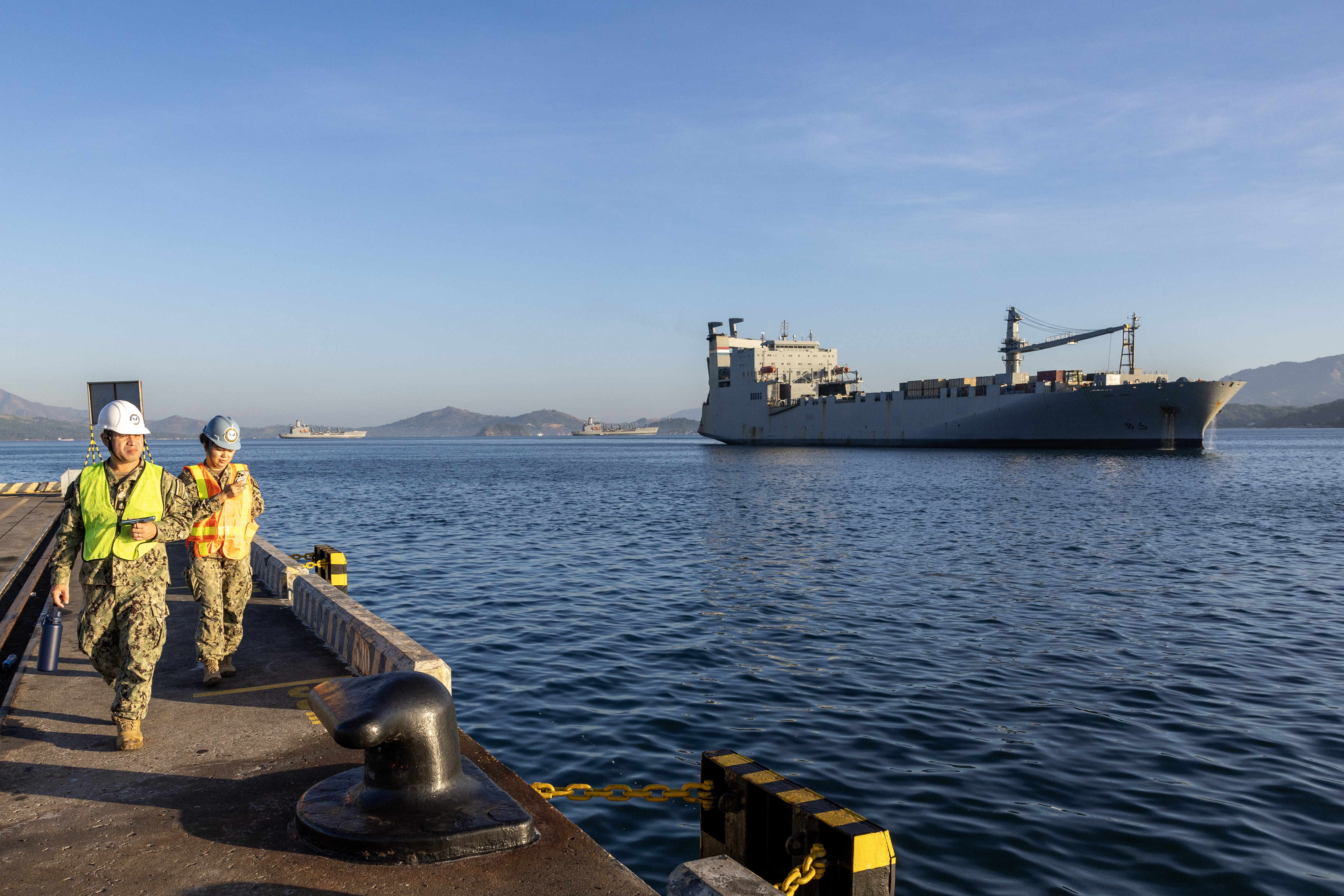
These activities come amid Manila’s new military strategy, dubbed the Comprehensive Archipelagic Coastal Defense Concept, which aims to expand the scope of the Armed Forces of the Philippines’ area of responsibility beyond the territorial waters and into its exclusive economic zone. The new strategy comes amid increasingly brazen incidents with China, particularly around Second Thomas and Scarborough shoals.
The Philippine military highlighted that Balikatan 2024 will hold four Combined Joint All-Domain Operation field training exercises across the country, many of which will occur in the vicinity of South China Sea flashpoints. This includes the rapid deployment of High Mobility Artillery Rocket Systems across Palawan via C-130 and hovercraft in HIMARS Rapid Infiltration drills, which aim to quickly deploy the advanced rocket system at a moment’s notice to defensive points.
During this year’s exercise, two amphibious warships – USS Somerset (LPD-25) and USS Harpers Ferry (LSD-49) – and their associated complement of Marines, landing craft air cushions, CH-53E heavy-lift helicopters and new Amphibious Combat Vehicles in amphibious assault drills on the western coastline of Palawan facing the South China Sea. Elements from the 3d Marine Littoral Regiment will be participating in a counter-landing drill in Northern Luzon in the later stages of the exercise.
Planned, Transported, and Deployed into the Indo-Pacific!
The 1MDTF’s Mid-Range Capability has arrived in the Philippines 🇵🇭 as part of Salaknib 24. The newest @USArmy Long Range Precision Fires system is a versatile and capable platform well suited to support a safe, stable,… https://t.co/rILes2q8QR pic.twitter.com/vv32E53mjj
— General Charles A. Flynn (@USARPAC_CG) April 15, 2024
Another first for this year’s Balikatan is the Army’s deployment of its recently procured Mid-Range Capability, a ground-based vertical launch system derived from Navy technology, to Northern Luzon. While originally deployed for army-to-army exercise Salaknib under the 1st Multi-Domain Task Force, one of five planned Army units formed to counter the multi-domain threats posed by peer adversaries such as China, the Philippine military lists the system as one of the assets forces will utilize during the exercise. While it’s unclear what activities the Mid-Range Capability will partake in during Balikatan, Philippine military officials confirmed that it will get fired in the country during another exercise later this year.
The ground-based launcher, capable of firing Tomahawk Land Attack Missiles and SM-6s, marks the first deployment of U.S. intermediate-range missiles to the first island chain and Indo-Pacific. Commander of U.S. Army Pacific, Gen. Charles Flynn, previously stated that this system would get placed in the region without explicitly stating its planned deployment location.
Manila will also conduct many landmark achievements for its military, including the first launches of an anti-ship missile from a Philippine Navy warship and the Philippine Air Force’s surface-to-air missiles during a combined integrated air missile defense exercise.
While the Philippine Marine Corps received a shipment of Indian-made BrahMos supersonic anti-ship cruise missiles last week, they will not deploy during this year’s exercise.
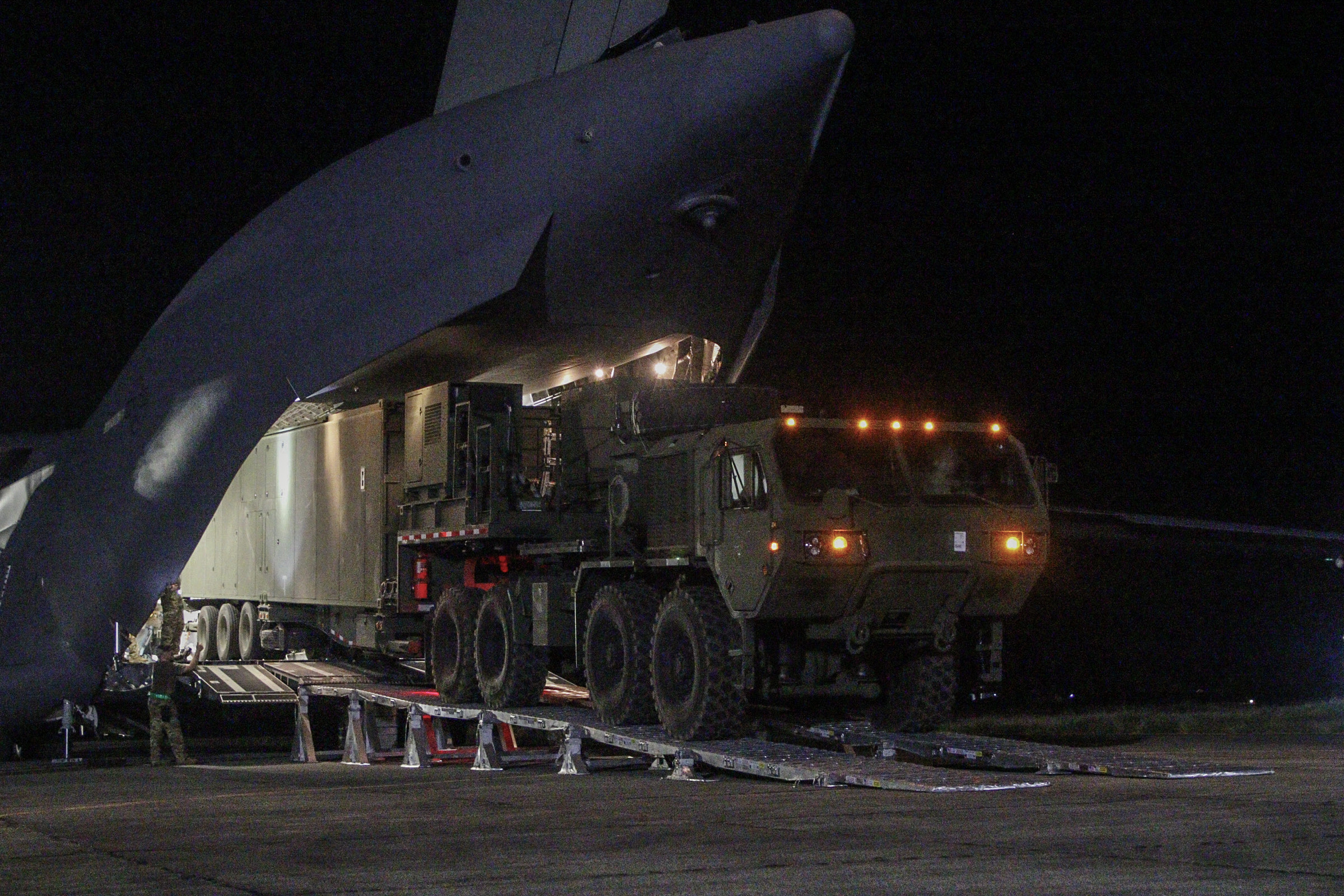
Balikatan brings many opportunities for the Philippines’ modernizing military, according to Joshua Espeña, the vice president of the International Development and Security Cooperation, a Manila-based think tank.
“We know that the AFP is technologically disparate with its allies, let alone against the PLA [People’s Liberation Army]. In this case, the AFP can further acquire technical know-how on the latest tech concerning autonomous and manned combat systems and how it can be applied in its joint operating concept,” Espeña said about what lessons Philippine forces could learn from their more advanced American counterparts.
Meanwhile, Collin Koh, a research fellow at the Institute of Defence and Strategic Studies under the S. Rajaratnam School of International Studies in Singapore, thinks the key takeaway from Balikatan for the Philippine military is an “appreciation of the need for modern warfighting capabilities,” not limited to equipment.
“Being immersed in the exercises not only allows for building of interoperability between the Philippine and U.S. militaries, which will be key to future high-intensity combat scenarios, but to allow the AFP a better appreciation in gaps concerning assets, doctrine and training that have to be bridged as part of this posture shift,” Koh told USNI News.
As for China’s response to the large military exercise, which has many activities occurring a few hundred miles away from its artificial South China Sea holdings and claims, Koh thinks Beijing will “be making the standard, customary public statements and on top of that, ramp up its propaganda campaign aimed at sowing disinformation to discredit the Philippine-U.S. alliance, especially casting aspersions about American reliability.” He further expects a “muted” reaction from neighboring Southeast Asian countries.


